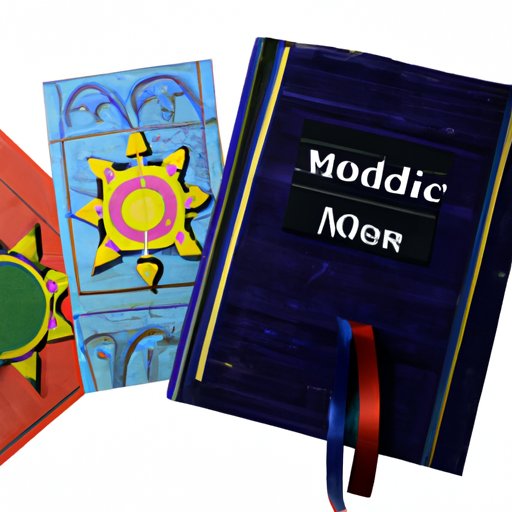I. Introduction
When we read a book or a poem, we often experience a certain emotion or feeling; this emotion is called mood. Mood refers to the prevailing emotional atmosphere of a literary work, which is created by the author through the use of various literary techniques. In this article, we will explore the concept of mood in literature, its importance, and how it enhances the literary experience.
II. Understanding Mood in Literature: An Introductory Guide
Mood is an essential element of literature, as it sets the tone of the work and creates an emotional backdrop for the reader. Mood can be defined as the emotional atmosphere of a literary piece that evokes certain emotions or feelings in the reader. It is often confused with tone and atmosphere; however, mood is the emotional response elicited in the reader, while the tone is the author’s attitude towards the subject, and atmosphere refers to the physical environment or surroundings that affect the mood.
III. The Power of Mood: How it Drives the Literary Experience
Mood plays a significant role in driving the literary experience and can make or break the impact of a literary work. A well-crafted mood can evoke strong emotions in the readers, making the story linger in their minds long after they have finished reading it. For instance, a sense of foreboding created by mood can keep readers on the edge of their seats while reading a thriller or horror story. Alternatively, a romantic or melancholic mood can make readers nostalgic and introspective.
On the other hand, a poorly executed mood can do just the opposite, ruining the effect and undermining the author’s intent. For example, a story intended to be thrilling can end up feeling flat and dull without the right mood. Therefore, the importance of mood in literature cannot be overstated.
IV. Creating Mood in Literature: Techniques and Examples
Authors use various techniques to create mood in literature, and some of the most common techniques include diction, imagery, syntax, and figurative language. Diction refers to the author’s choice of words, and the right words can help in creating an appropriate mood. For instance, an author may choose vivid and evocative words to create a celebratory mood or somber and gloomy words to create a depressive mood.
Imagery, which refers to the use of sensory details, is another potent tool used in creating mood. A skilled author can use imagery to paint a vivid mental picture in the reader’s mind, arousing certain emotions or feelings. Syntax or the way the author arranges words and sentences can also help set the mood. For instance, short, abrupt sentences can create a tense or anxious mood, while long, flowing sentences can produce a serene or peaceful atmosphere.
V. The Impact of Mood on Readers: Exploring Emotional Response in Literature
Authors use mood as a powerful tool to elicit specific emotional responses from readers. Depending on the intended effect, mood can be crafted to invoke a wide range of emotions, from fear and sadness to joy and hope. For instance, a sense of unease or uneasiness created by a tense or eerie mood can evoke feelings of fear or apprehension in readers, while a lively and celebratory mood can inspire sentiments of happiness and joy.
It is essential to note that different moods can elicit different emotional responses from different readers. Perhaps a reader might find an author’s narrative mood depressing instead of melancholic, or vice versa. Thus, mood, like all literary elements, is subjective to interpretation.
VI. Exploring the Connection Between Setting and Mood in Literature
Setting plays a crucial role in creating the mood in a work of literature. The right setting can enhance the mood to the extent of making it more tangible and realistic. For instance, if an author intends to create a dark and foreboding mood, he could place the characters in a creepy and abandoned mansion or an eerie forest. Alternatively, a warm and comforting mood could be created by placing the characters in a cozy and welcoming home.
A well-planned setting and mood create a cohesive environment that paints a complete and realistic picture of the author’s intended meaning. Often, the setting is not just the backdrop for the events but contributes to the story’s meaning and reinforces the mood’s emotional impact on readers.

VII. The Role of Mood in Genre Fiction: From Horror to Romance
Different genres use mood in unique ways to create an appropriate atmosphere and evoke specific responses in readers. For instance, horror, thriller, and dark fantasy genres typically have a dark and foreboding mood intended to elicit fear, anticipation, and suspense. In contrast, romance novels typically have an airy and whimsical mood that create a sense of intimacy, warmth, and comfort.
However, this does not mean that a genre is restricted to a single mood. For example, horror genres can also have moments of levity and humor, while romantic novels can have moments of sadness and melancholy. Therefore, it is essential to balance the mood according to the story’s needs to achieve a well-rounded literary experience.
VIII. Analyzing Mood in Classic Literature: Themes and Approaches
Classic literature is known for its complex and intricate themes. One of the ways to understand classic literature is to analyze the mood, which can reveal a deeper meaning and intent of the author’s work. Various approaches used to analyze mood in classic literature include linguistic, historical, and cultural analysis.
Linguistic analysis focuses on the author’s use of language, examining diction, syntax, and tone to decipher the underlying mood. Historical analysis focuses on the author’s cultural background and the work’s context, exploring how they shape the mood and meaning. Conversely, cultural analysis focuses on the literary work’s social and cultural context, examining how the author’s cultural values and beliefs influenced the mood and themes of the work.
IX. Conclusion
This article has explored the concept of mood in literature and how it enhances the literary experience. We have seen that mood is a powerful literary tool that influences the reader’s emotions and can make or break a literary work. By understanding how authors use mood in literature and how it affects readers, we can develop a keen insight into this essential aspect of literary analysis.
Thus, mood in literature is critical to creating a well-rounded literary experience by immersing the readers in the intended emotions and sentiments of the work.
